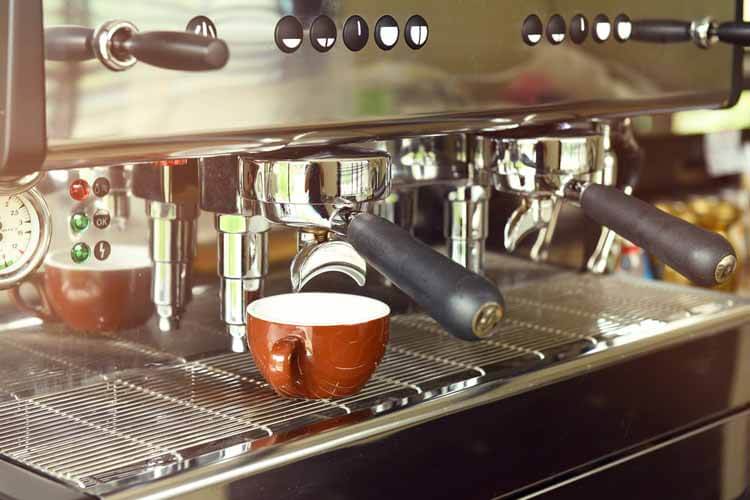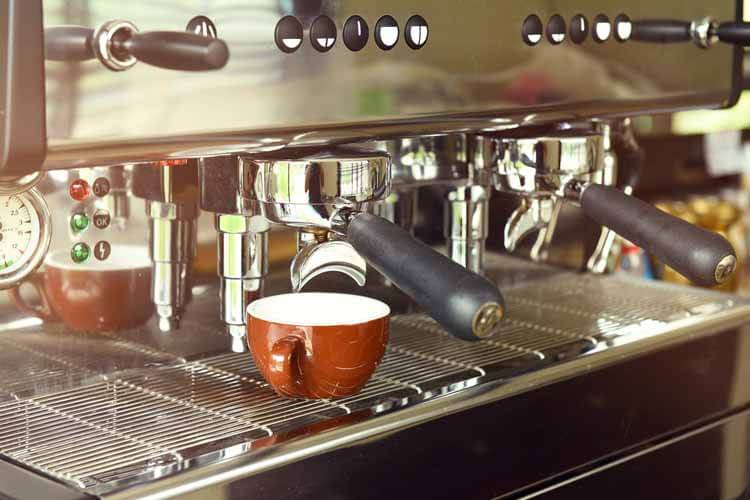
What better way to start an office day than having some good espresso? An espresso machine is a great investment for coffee lovers due to how easy it is to make coffee using them.
To make delicious coffee, you do have to know how to operate the machine. Fortunately, espresso machines are generally designed to be user friendly. This article will guide you on how to use an espresso machine.
Parts of an Espresso Machine
To better understand the process of operating an espresso machine, you will benefit greatly from knowing more about the parts. It’s also helpful to know the names of the parts as you’ll be able to identify them better. The parts you should be familiar with are:
Reservoir
The reservoir is a part of the espresso machine that holds water. They are marked to show the quantity of water they can hold and should not be overfilled. You can remove them on some models for easier refilling. Alternate forms of this part include a water pipe.
Brew Head
This is also alternatively known as the group head. Your coffee is brewed here once you’ve supplied the grounded coffee beans to it.
Portafilter
A portafilter is short for a portable filter. It is a filter with a handle where your coffee beans are grounded in. This is then connected to the brew head for brewing. There is a shot basket slotted into the handle filter.
Water Tap
Espresso machines have a thin tap that dispenses hot water into the cup. The reservoir must be filled for it to work.
Steam Wand
Not all espresso machines have a steam wand as it is an accessory in most cases. The purpose of this tap is to steam milk for cappuccinos.
Pressure Gauge
A gauge indicating the boiler and pump pressures is included. You will use this to keep track of your machine during the brewing.
Aside from these, espresso machines also have various adjustment knobs and switches for controlling it. The layout and options available differ from model to model. You must refer to the instruction manual or an online pdf of your model to look at all the parts and controls in detail.
What Is Needed for Making Coffee in an Espresso Machine?
You don’t need much to make coffee in an espresso machine. Before starting, just make sure you have the items listed below:
Coffee or Espresso Grounds
Probably the most important thing you need. You will need a brand of coffee grounds or espresso grounds, depending on what you want to drink. Make sure they are fresh for the best experience.
Water
The reservoir of your espresso machine needs to contain water for it to work. Ideally, filtered water is preferred, but if your model has an inbuilt water filter, you can just use regular water.
Cup
You will need somewhere to store the brewed coffee or espresso if you are serving multiple people. Make sure the volume of the cup is higher than the maximum marked line on the reservoir. This ensures that there is no spillage or wastage.
Milk
Whether or not you will need milk depends on what you are making. Cappuccino requires milk, so if you are making that, make sure you have a fresh pack of milk from your preferred brand or supplier.
Grinder
This is optional, and you’ll only need it if you have coffee beans and your model doesn’t have an builtin grinder in it. You can grind coffee beans into the coffee ground for use.
A Guide to Use an Espresso Machine
Most espresso machines follow a general procedure with some slight variations. It is recommended to go through the manual beforehand to get a good idea of any unique features of that machine. The general procedure is outlined below:
Cleaning Out the Residue
This step is important if your espresso machine has been used. Whenever you use it to make a drink, there will be some residue of coffee grounds inside the portafilter basket. It is important to clean out the residue in this basket to prevent contamination when making another batch of coffee or espresso.
Simply use some water to clean out the basket. Wash out the leftover grounds and let it all seep through the filter. Do another washing and then let the filter dry.
Fill the Reservoir
As mentioned above, the reservoir holds water and needs to be filled whenever you use the espresso machine. First, you need to locate the reservoir, which varies from model to model. After finding it, you need to open it to allow it to be filled.
Some reservoirs consist of a cap at the top, which you need to twist and open. Others are detachable containers that you can open and then fill with water.
You should use filtered water. Reservoirs have markings to indicate their capacity. Keep track of the markings and do not overfill when adding water.
Preheat
After adding the water, you then need to preheat it before using. Connect the espresso machine to the power supply and turn it on and check the indicator to see if it is working or not. The water will begin to get warm. How warm it gets will depend on how long you allow the preheating process to go on.
It helps to have a timer, so you can set the water to the perfect temperature. Some espresso machines can be set to indicate when the water has reached the desired temperature. Other machines will have a light (sometimes built into a switch) to indicate when the water is the correct temperature.
Preparing the Coffee Ground
If you have coffee beans, you will need to grind them before you can give them to the espresso machine. Well-grounded coffee beans will ensure a good drink. In case you have coffee grounds, you can skip this step.
For grinding coffee beans, you will need to have an espresso machine with an builtin grinder or a coffee grinder of your own. Wash out the grinder beforehand, and then place the new batch of beans. Use the grinder and grind the coffee beans. Check the texture until the powder is smooth.
Filling the Portafilter
Take the coffee grounds and pour them into the portafilter basket. After pouring some grounds, give a light tap to the basket to help the powder fully spread across the basket. After filling in the required amount, you can take a spoon and use the flat side to level the grounds.
Make sure the surface is properly leveled and remove any excess if needed. A properly leveled portafilter basket will ensure good tasting coffee or espresso. Some machines will come with multiple portafilters – one for a single shot, another for a double, and perhaps a third that takes pods of pre-ground coffee.
Tampering Coffee Grounds
The portafilter will have an additional item known as a tamper. You can use this item to push down on the powder and ensure it is compressed. This is another way to keep your grounds leveled and ensure the drink tastes strong. Continue to apply pressure until the content is compressed and even.
Connecting the Filter to the Head
Once the portafilter is filled with coffee or espresso grounds, you need to connect it to the group head. Take the portafilter to the espresso machine’s group head (there should be a spout that you can connect it to).
Press the filter to the spout and twist it. A clicking noise will indicate that the filter is properly connected.
Preparing the Container
Make sure you have a cup and place it underneath the mouth of the connected portafilter. The coffee will fall through the mouth and into the cup.
Pouring Shots
Once the cup or container is properly placed, press the shot button on your espresso machine. There are usually two shot buttons- single and double shots. Choose your shot type, and the machine will pour coffee into the container. Other machines require you to use a switch or button to start and stop the shot, so you will decide how much water goes through the coffee grounds.
Getting a Container
For the best experience, having a stainless steel pitcher will make steaming milk and frothing much better. While an old cup will also do, you’ll have a harder time determining whether the milk is hot enough. Whatever container you use, fill it with fresh milk up to one-third of the capacity.
Steaming the Milk
Once you have the container filled with milk, take it to the steam wand of the espresso machine. Submerge the steam wand’s tip an inch below the milk. Turn the steam wand on.
Swirling
To ensure the milk is properly steamed, swirl the container. Carefully tilt it and swirl until you see the milk slowly turn foamy.
Check the Temperature
If you’re using a stainless steel pitcher, you can touch the body of the pitcher to check the temperature. Once it’s reached the desired temperature, you can turn the steam wand off.
Preparing the Latte or Cappuccino
Lattes are made by adding steamed milk to your cup of espresso while cappuccinos are made by adding frothed milk.
Steamed milk can be made by heating the milk. You then need to pour it into the cup of espresso you have prepared (follow the steps in the previous section for making an espresso). Slowly pour the steamed milk into the cup of espresso and swirl it. Your latte will be ready.
For cappuccinos, you will need frothed milk which you can prepare using a steam wand by following the steps above. After preparing the frothed milk, gently pour it into the cup of espresso you have prepared to make a cup of cappuccino.
Conclusion
Learning how to use an espresso machine is quite easy, as you can see. Now you no longer have to worry about not being able to make the perfect espresso, as these machines will do it easily for you.

